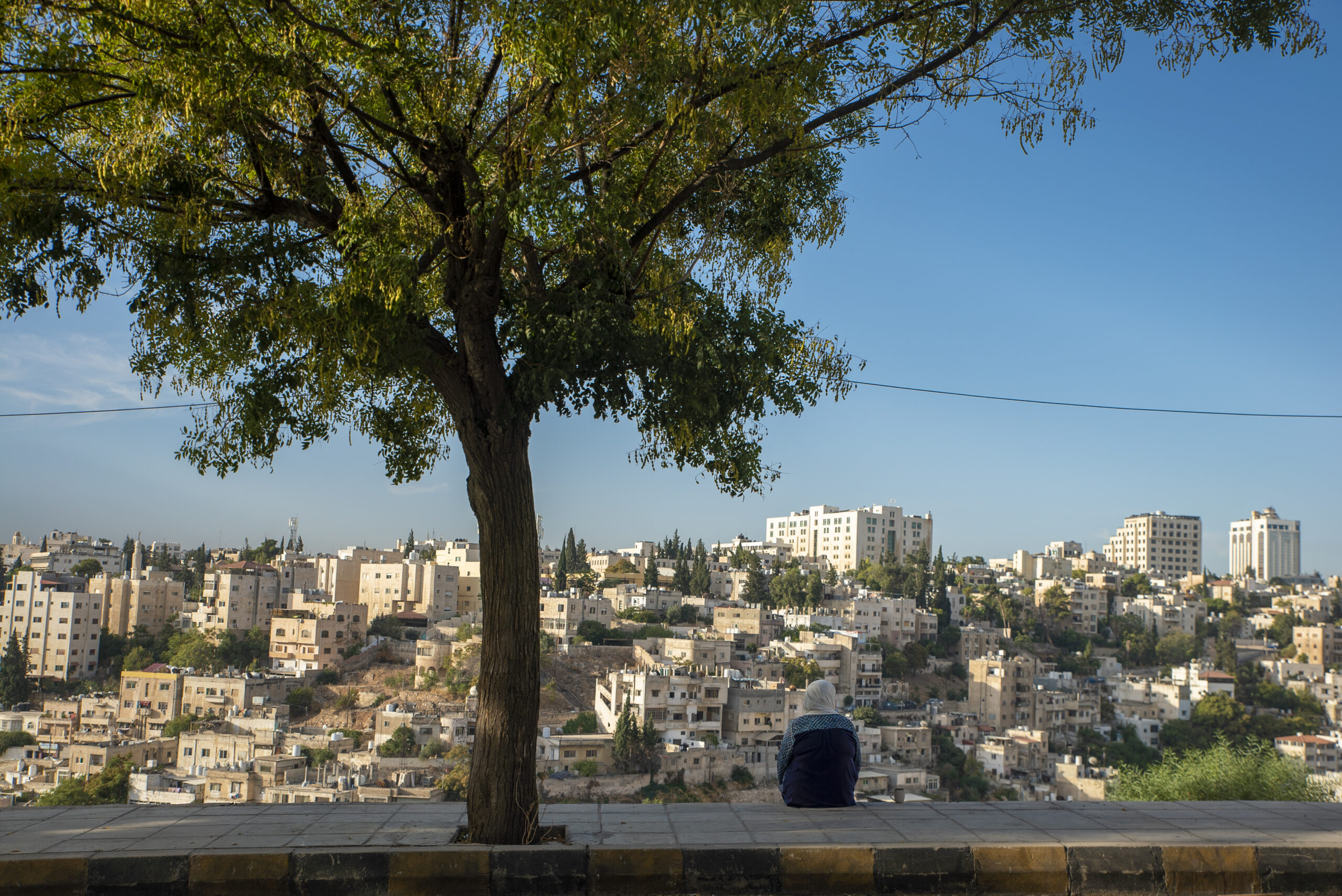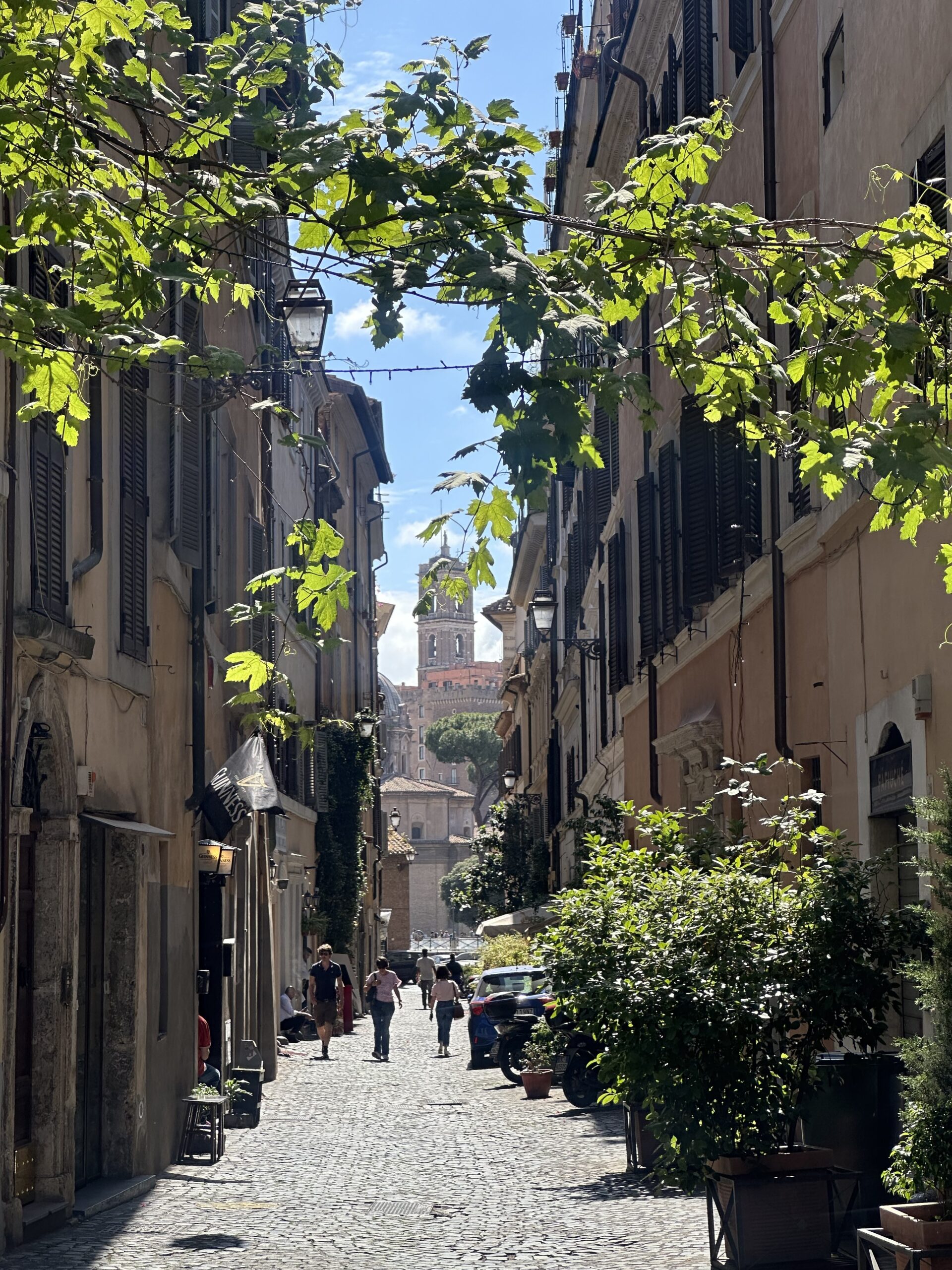By FRED LYNCH
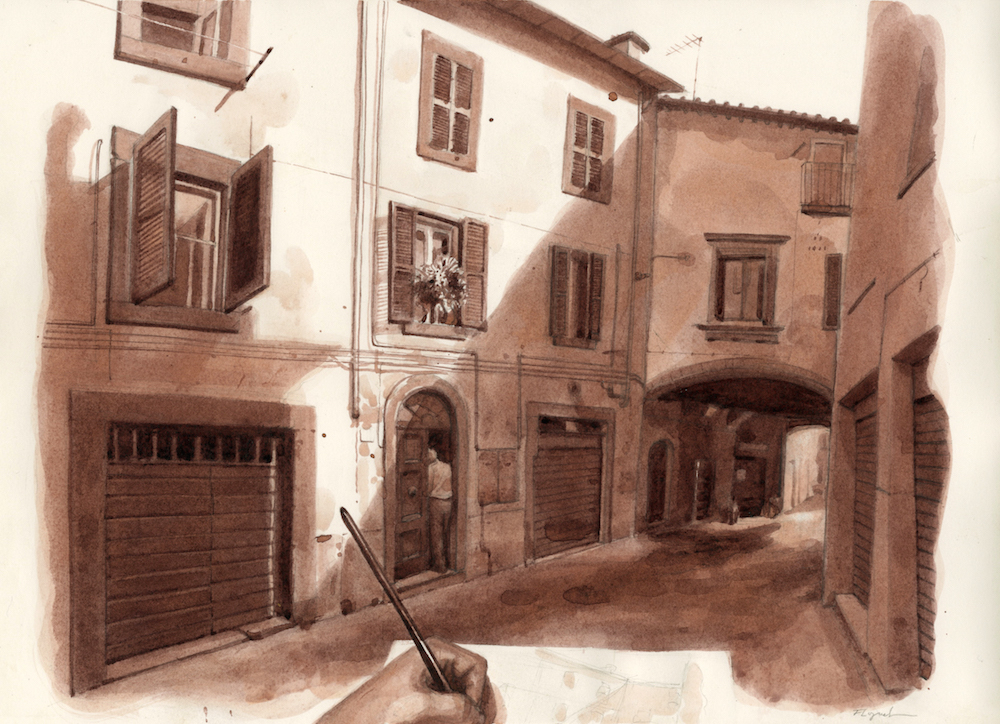 Scene Stealing, ink on paper, 15 x 11.5”
Scene Stealing, ink on paper, 15 x 11.5”
“The painter wanders and loiters contentedly from place to place, always on the lookout for some brilliant butterfly of a picture which can be caught and set up and carried safely home.”
– Winston Churchill, 1948, Painting as a Pastime
Ten years ago, I left the monastic life of my studio practice to engage with the world differently, by literally facing it. The change came with the invitation to teach for a summer study-abroad program in Central Italy. I designed a course that focused on journalistic drawing—a practice of on-site investigation, of working as both correspondent and artist. I created the class as much for myself as for my students, and when I wasn’t teaching, I practiced what I preached. The result is an ongoing series of drawings that explores discovery and the experience of place through site-specific inquiry.
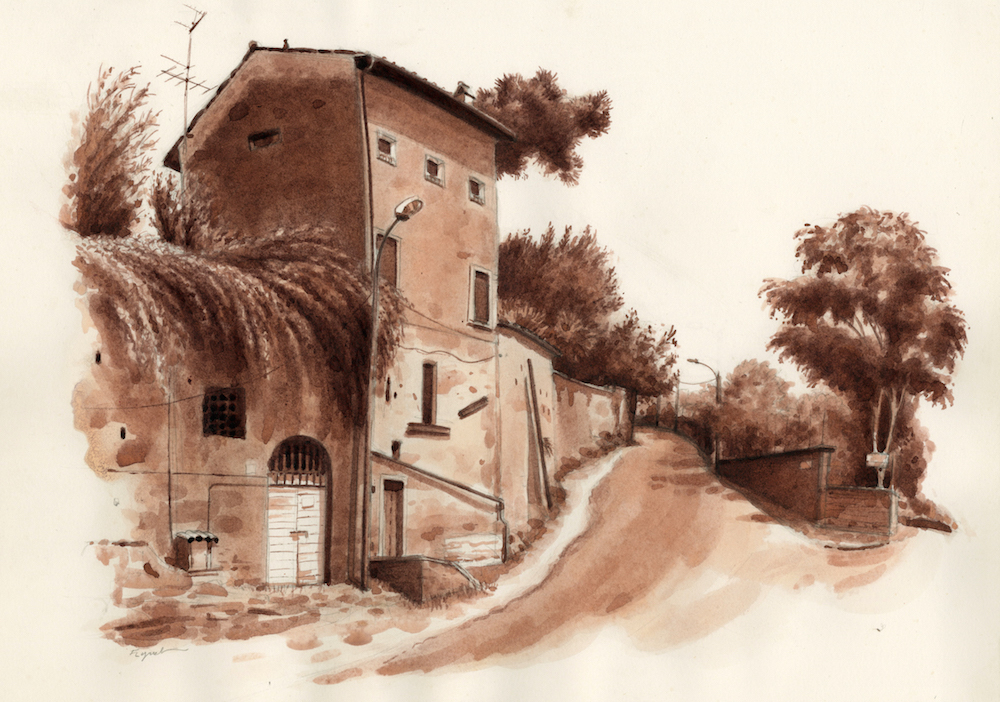
Outskirts of Town, ink on paper, 15 x 11.5”
My principle subject is Viterbo, a humble, walled, medieval city on the traditional pilgrimage route to Rome. I roam the streets in search of serendipity, and these images are the results. There is an English slang term, “coddiwomple,” which seems apropos, meaning “to travel in a purposeful manner towards a vague destination.” Inspiration for me has much to do with being at the right place, and at the right time. Turning a corner can cause your heart to skip a beat. Capturing that sense of wonder on paper is the challenge.
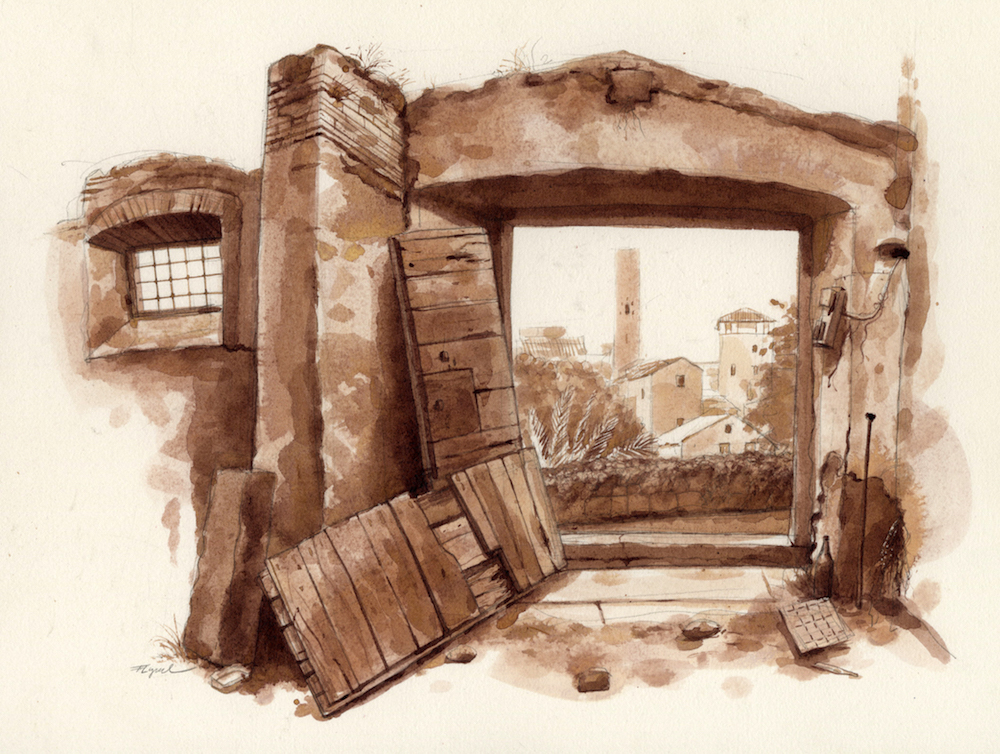
From Trash to Treasure, ink on paper, 15 x 11.5”
Drawing on site is an experience as well as an art. It’s extra-sensory. As I sit and draw for hours on the streets, I soak up every inch of the scene, along with its sounds, smells and local characters. My goal is to translate that rich experience through my drawings—impressions as well as appearances.
Earlier in my career, I created places; now I bear witness to them. My work turned from inward-looking to outward-looking. Drawings had always been a mirror to my brain. Now they are a window to a faraway place.
I usually sit before my subject for a couple of hours. After that, the light has changed but the image on the page is well formed. Later in my studio I add more ink to darken the images, and use photographs to add any “telling” details I might have missed.
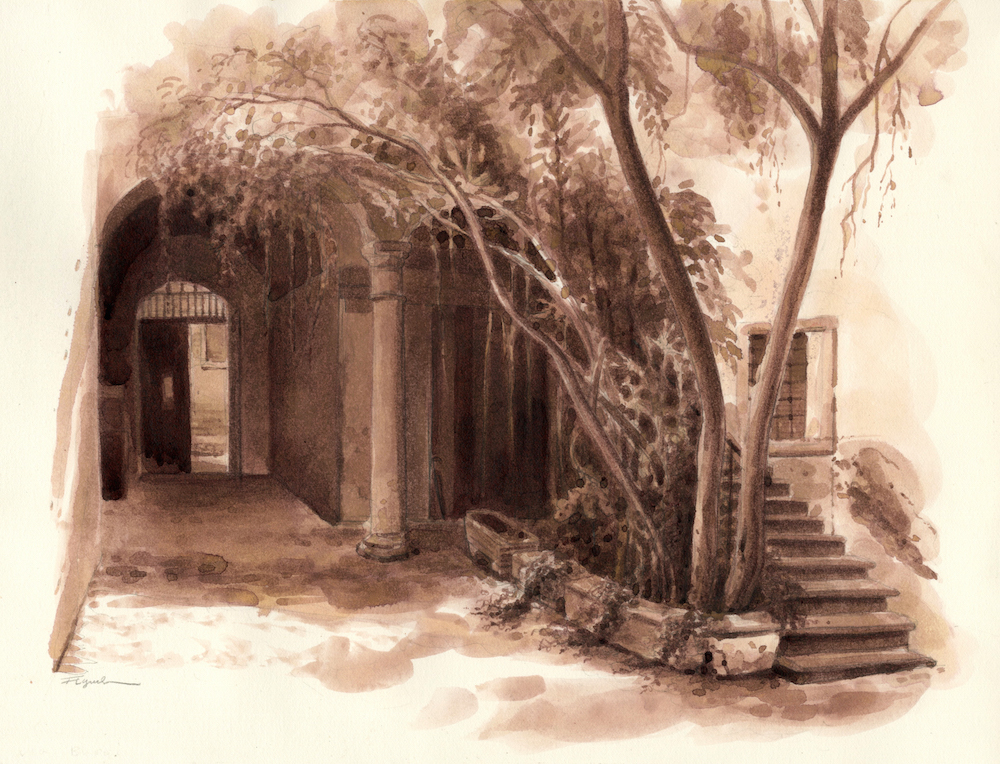 The Courtyard, ink on paper, 15 x 11.5”
The Courtyard, ink on paper, 15 x 11.5”
In my work, I’m not just the observer; I’m the observed. Often, people look surprised or confused by the scene I’m drawing. They stop and look at what I’m facing. “Why that?” they seem to think. They point to the cathedral or a fountain and tell me to draw there. But those sites usually don’t need me. I choose to focus attention elsewhere. My subjects are often simple and direct, unglamorous and unromantic. I try hard to follow my instincts and to honestly capture what draws my attention and pleases my senses. I hope to reveal something special in the overlooked. More often than not, the drawings feature a strong sense of light and shadow, texture, and a contrast of big shapes and little details. I focus on the personality of the places and the gesture of forms.
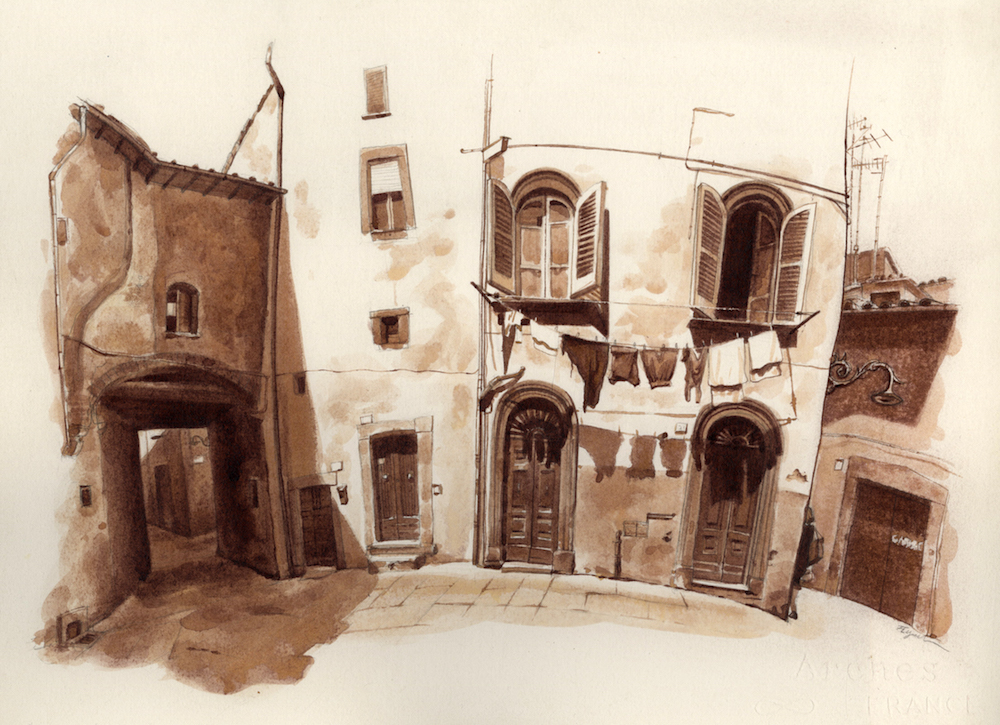 Wide View of a Narrow Piazza, ink on paper, 15 x 11.5”
Wide View of a Narrow Piazza, ink on paper, 15 x 11.5”
To walk through Italy with your sketchbook is to walk in the well-worn footsteps of generations of traveling artists. Think of all the artists who traveled nearby: Corot, Goethe, Escher, Fragonard, Inness, Delacroix, and Claude Lorraine. Up in Venice, Sargent, Turner, and Whistler created stunning art of witness and wonder. And those are just the tip of the iceberg. It’s intimidating. It took years for me to draw the Coliseum in Rome, despite visiting it a number of times. I wasn’t ready yet to take my turn and exist in comparison to such giants.
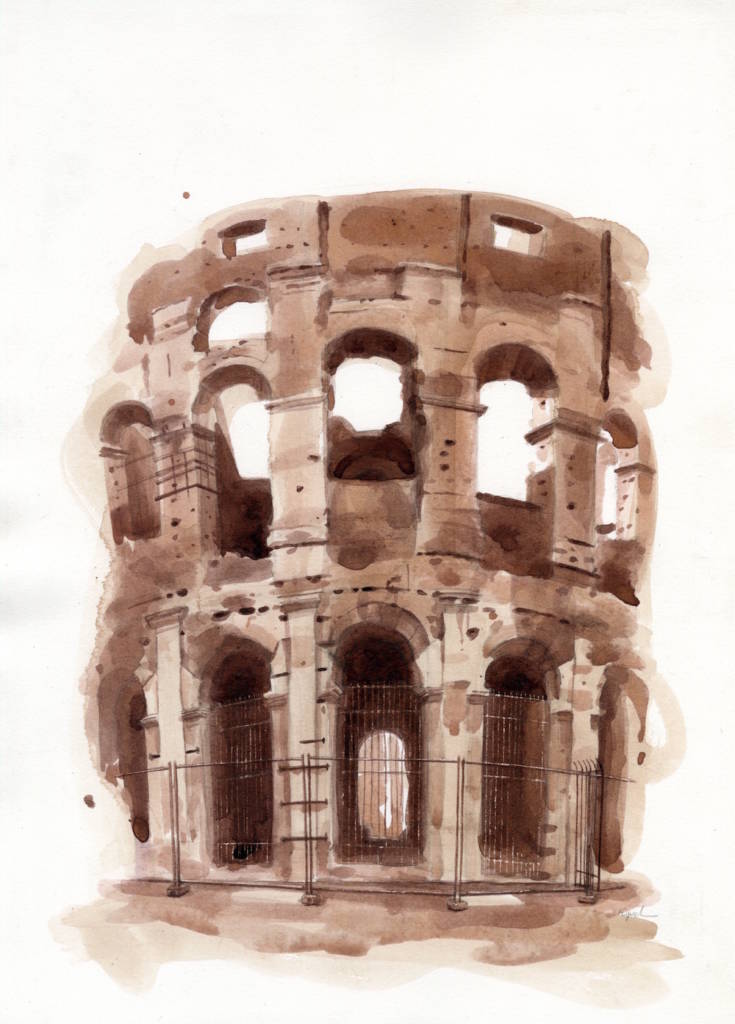
The Coliseum, ink on paper, 11.5 x 15”
Soon I’ll head back to Italy, and again, I’ll draw constantly for a month. Where I’ll draw and where the work itself is going, I’m not exactly sure. It seems that each year, I add more and more complexity, and more and more ink. Last year, I created a triptych and perhaps that is where I’ll start next—exploring the connection of multiple drawings. My biggest fear is the loss of the initial inspiration and spontaneity that sparks the piece. I’ve killed drawings by overworking them. But then, I’ve hurt them too, by quitting too soon, and feeling later that there was more to say but that I was afraid of ruining things. It feels at times like walking a tight rope.
 Rooftop View of a Medieval Town, ink on paper, 45 x 11.5”
Rooftop View of a Medieval Town, ink on paper, 45 x 11.5”
“Drawing makes you see things clearer, and clearer and clearer still, until your eyes ache.”
– David Hockney (artist, b.1937)
Fred Lynch is a professor of illustration at Rhode Island School of Design (his alma mater). He teaches in Central Italy each summer for Montserrat College of Art, where he was a professor for many years. Fred’s work can be found in books, magazines, exhibitions, and online at FredLynch.com. He has taught drawing workshops in Italy, Spain, Brazil, England and the United States. Fred lives in Winchester, Massachusetts.
From the beginning, The Common has brought you transportive writing and exciting new voices. We are committed to supporting writers and maintaining free, unrestricted access to our website, but we can’t do it without you. Become an integral part of our global community of readers and writers by donating today. No amount is too small. Thank you!
 Scene Stealing, ink on paper, 15 x 11.5”
Scene Stealing, ink on paper, 15 x 11.5”

 The Courtyard, ink on paper, 15 x 11.5”
The Courtyard, ink on paper, 15 x 11.5” Wide View of a Narrow Piazza, ink on paper, 15 x 11.5”
Wide View of a Narrow Piazza, ink on paper, 15 x 11.5”
 Rooftop View of a Medieval Town, ink on paper, 45 x 11.5”
Rooftop View of a Medieval Town, ink on paper, 45 x 11.5”
